Breaking Apart the UK-EU Wheat Relationship
This article was originally published by Gro Intelligence in the Summer 2017 issue of Dry Bulk magazine.
Almost a year after the shocking Brexit vote, Britain has triggered Article 50 and started the official negotiations that will determine the terms on which the country will exit the European Union. These negotiations decide the future of Britain’s access to the EU’s single market, which British grains exports are heavily dependent on. Any major changes that would limit this access could leave British wheat producers in a vulnerable position.
Background
The UK’s main grains crop is wheat, which is grown on over 30% of the country’s land cultivated by agriculture, or arable land, and almost two-thirds of the country’s cereal land. In 2016, the UK produced over 14 million metric tons of wheat. Of the wheat that the UK produces, most of it is either used for feed or milled into flour, with only a small portion used for bioethanol production.
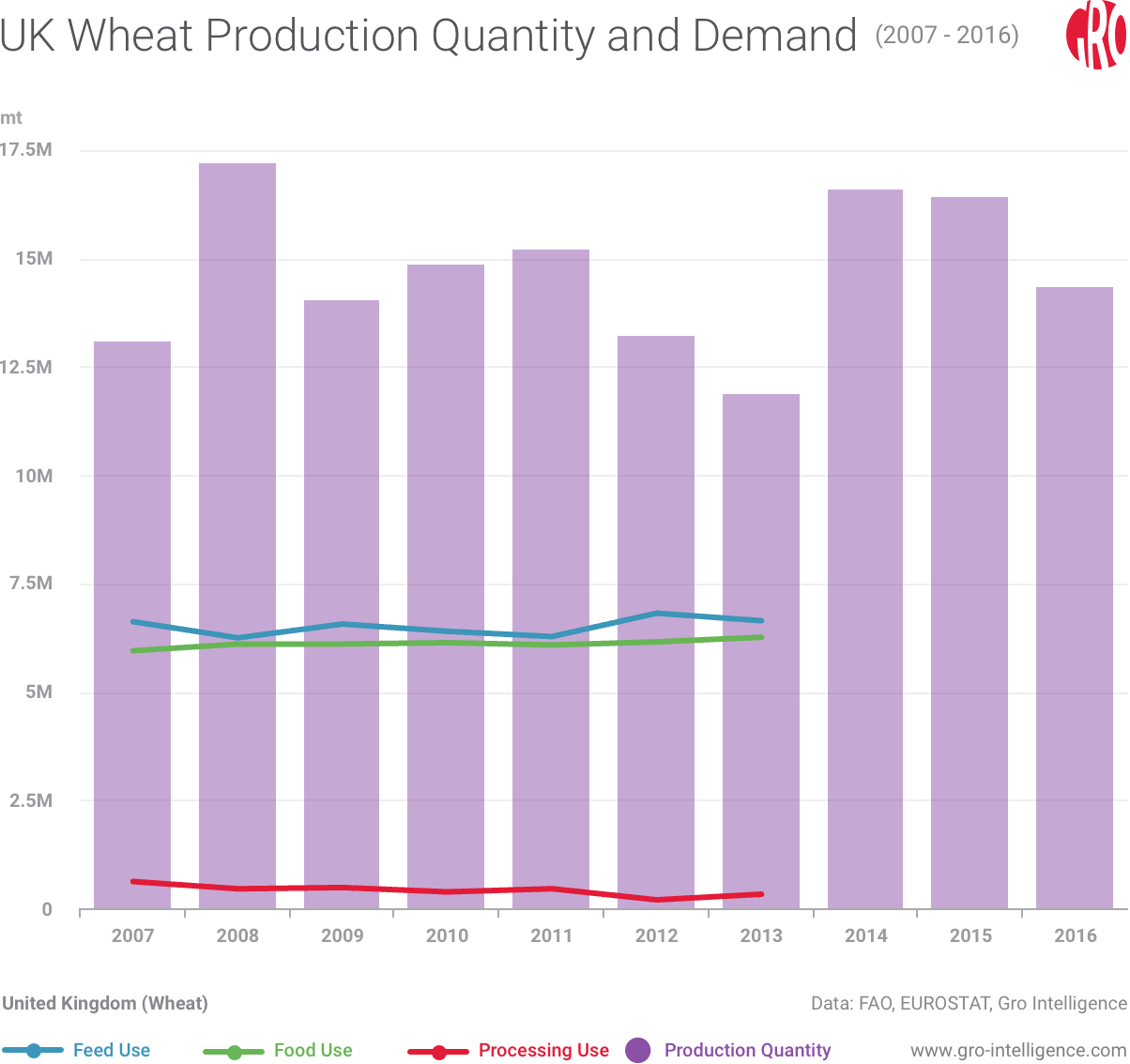
Despite the local importance of wheat in UK agriculture, the country is a small wheat producer worldwide. As a result, British exporters typically act as price takers in global markets. The UK exports approximately 15% to 20% of their wheat production, primarily bound for EU countries, each year. This trade relationship now stands on shaky footing after the Brexit vote. In contrast with the general trade deficit relationship that the UK has with the EU, the UK has a trade surplus in wheat trade with the EU and exported almost double the amount that it imported from the EU in 2016.

Situating UK Wheat in the Global Marketplace
Globally, wheat prices are at historical lows due to years of bumper crops resulting in abundant global supplies. In 2016, the top six wheat exporting countries held stocks of wheat at six-year highs. In response to this global glut, farmers—particularly in the US—are now planting and harvesting fewer acres of wheat. Wheat production for the 2017/2018 marketing season is thus expected to decline for the first time in five years, which has helped raise future price expectations.
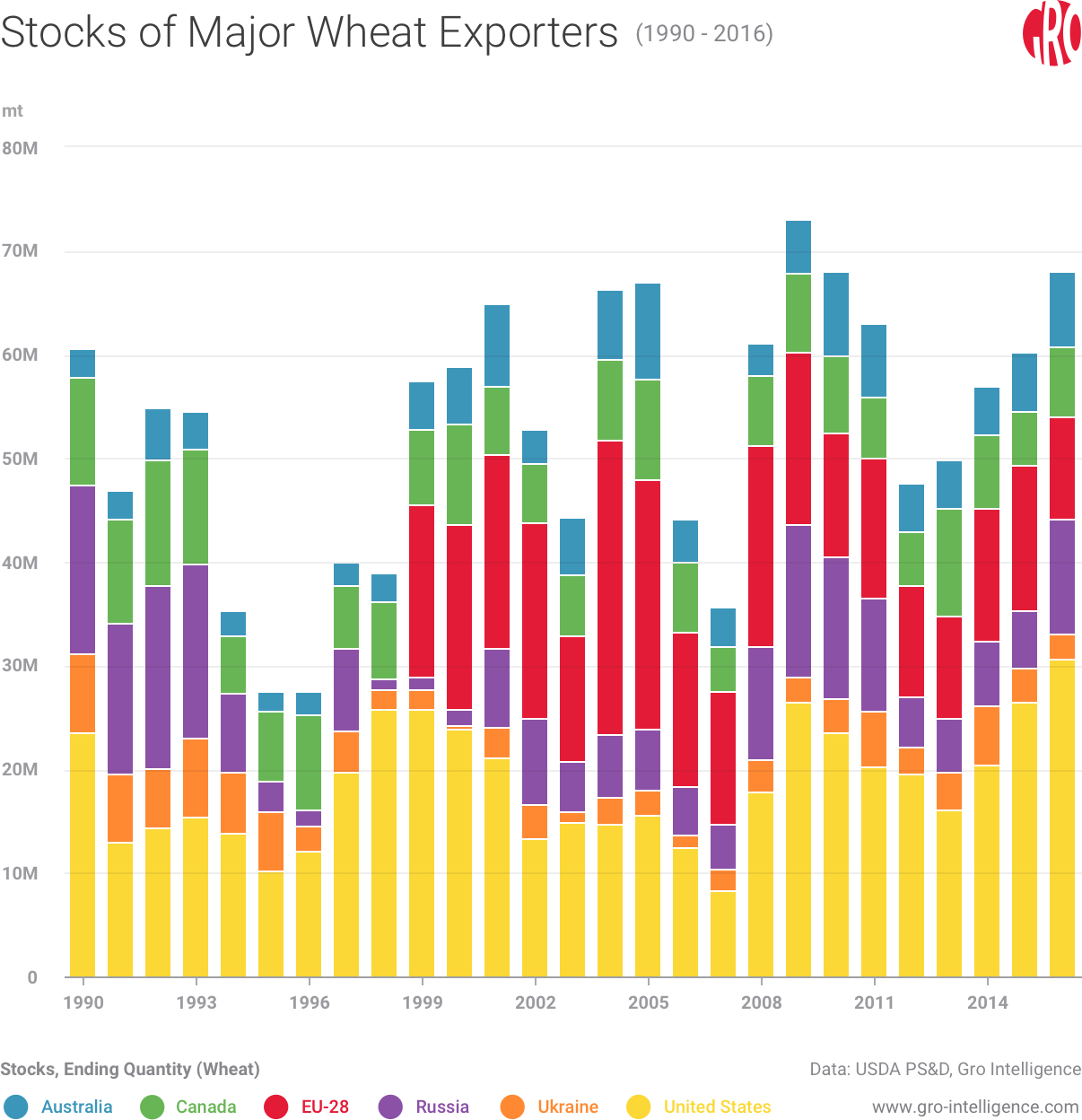
The UK generally exports low quality wheat for feed and imports high quality wheat to be processed into flour. It mainly sources wheat for milling purposes from Germany, France, and Canada. As a relatively small world producer, UK wheat exports vary year-to-year and tend to depend on availability of both domestic and foreign supply, competition, and quality. As an example of the fluctuation in UK wheat exports, just over 400,000 metric tons of wheat were exported in the 2013-2014 marketing year while exports for the next 2014-2015 marketing year reached almost two million metric tons.
In general, almost half of the UK’s goods and services exports are bound for the EU, but UK wheat exporters are even more dependent on the EU market. On average, the UK exported approximately 80% of its wheat to EU countries, from the 2011-2012 marketing season to the 2015-2016 marketing season. In particular, the Netherlands, Portugal, and Spain are all large consumers of British wheat. Outside of the EU, Algeria imports sizable portions of UK wheat, depending on feed demand and the status of local crops.
The ease at which British wheat is able to reach European buyers is facilitated by the fact that British exports enjoy access to the EU single market with no customs duties. Similarly, Britain’s trade relationship with Algeria is enabled by the fact that Algeria and the EU share a Free Trade Agreement, as British exports to non-EU countries currently depend on agreements established by the EU. On the producer side, British wheat producers are protected by EU import regulations as well as an intervention price of 101.31 euros per metric ton, set by the EU’s common agricultural policy.
Within the EU, France dominates both wheat production and trade as the largest producer and exporter. Though the UK is the EU’s third largest producer of wheat, it is a lower-ranked exporter. EU wheat exporting countries tend to compete for similar markets and France is the largest exporter to most of the UK’s wheat trading partners. As a result, UK wheat export trends can be easily influenced by movements in the French market. When France’s wheat production dropped by 32% in 2016 due to bad weather, British exports received a short-term boost.

As grains are relatively free-traded, price competitiveness, especially for feed wheat, is crucial on the global market in order to ensure the attractiveness of a country’s exports. The pound sterling fell by approximately 10% against the Euro in 2016 after the Brexit referendum result was announced. Along with the drop in French wheat production, the low exchange rate provided a boost for UK exports since the referendum. Despite a 12% drop in Britain’s 2016 wheat harvest, British wheat exports for the half-year period after Brexit surpassed the volume of exports for the corresponding half-year in 2015.
Trade After Brexit
In the upcoming trade negotiations, Britain has signaled that it is unlikely to remain as a member of the European Economic Area (EEA) like Iceland, Liechtenstein, and Norway though this option would allow Britain to retain access to the EU single market. Remaining a member of the EEA would require the UK to continue with two crucial actions that helped motivate the Brexit vote: contributing to the EU budget and allowing for free movement of labor with EU countries. Other options that Britain could pursue would all decrease Britain’s overall access to the EU single market in some way. Britain could choose to be a member of the European Free Trade Association like Switzerland, enter a Customs Union agreement with the EU like Turkey has, or independently establish a Free Trade Agreement with the EU. Failure to pursue any of the above options means that the UK would revert to status as a Most Favored Nation (MFN) with the EU under World Trade Organization regulations.
Under MFN status with the EU, British grains exports would be subject to the tariff rate quotas that the EU currently maintains. Without accounting for the US and Canada, the EU allocates 2.378 million metric tons of wheat imports to non-EU countries per year, to be divided equally each quarter. An additional annual quota of 122,790 metric tons was also granted in 2012, following the accession of wheat-exporting nations Bulgaria and Romania to the EU. Imports that fall under these set quotas are subject to a low, fixed tariff of 12 euros per metric ton. If a country’s exports to the EU fall above these quotas, they incur a higher, fixed tariff of 95 euros per metric ton.
The quotas are split on a first-come, first-serve basis and the EU has historically reported 100% fill rates, even though the UK was not subject to them. In 2016, the UK exported three million metric tons of wheat total, of which more than 2.1 million metric tons were bound for EU destinations. This means that British wheat exports alone were close to filling the EU’s quotas in 2016. If the UK does not secure an agreement with the EU that would allow the country to gain zero-tariff access to the EU’s single market for wheat, then a large portion of UK wheat imports into the EU would be subject to the above-quota tariff of 95 euros per metric ton, which would represent around a 50% tariff on current wheat prices. Given that price competitiveness is important for the grains trade, this higher tariff on British imports could significantly deter EU buyers and decrease the demand for British exports, leading to the reduction of a key market for British wheat producers.
While access to the EU single market is vital for British wheat producers, this access may not be easily gained. The EU has been known to grant zero-import tariff quotas in the past, and did so for Ukrainian grains in 2014. However, in the case of the Ukrainian example, the EU was attempting to economically integrate Ukraine, while the UK is now actively attempting to remove itself from the EU. In fact, Ukrainian wheat exports may benefit from Brexit as the EU’s reliance on them increases, and the Ukrainian economy becomes more linked to the EU’s. As well, EU sectors in competition with British wheat, such as French wheat producers, may not want to grant zero-import tariffs for British wheat. The high concentration of British wheat exports bound for the EU coupled with the fact that the EU is home to large wheat producers like France and Germany, and easing access for Ukrainian wheat, mean that British wheat needs the EU market more than the EU market needs British wheat.
Another danger that wheat producers face in Brexit negotiations is the fact that British negotiators could place the interests of other sectors above the interests of the wheat industry. The lack of EU single market access for British wheat could become a bargaining chip that the British government gives up in favor of single market access for other sectors deemed to be more important. For example, the British financial services sector also has a trade surplus with the EU much like the wheat industry does, but contributes much more to the UK’s GDP than wheat production does. If British negotiators are more focused on fighting for the interests of the financial services industry and securing single market access for them, while EU representatives are more intent on protecting the interests of their wheat industry, then the interests of British wheat producers could end up playing second-fiddle to their more powerful financial services counterparts.
The loss of unrestricted access to the EU’s single market would not heavily affect British wheat producers if the UK can secure Free Trade Agreements with wheat importing countries, such as Algeria and Morocco in North Africa. It could also take advantage of current low freight rates and gain more market share in Asian markets. However, this again raises the question of what the UK is willing to give up for these agreements. Countries are unlikely to enact agreements that benefit British exporters without gaining a favorable hand for their own exporting industries. Thus, such agreements could have negative effects on other British domestic industries.
As the British government balances the interests of different factions of their economy and attempts to secure market access for various industries, it could be pushed to grant wheat exporting nations easier access to the British wheat market by forgoing trade tariffs in exchange for unrestricted access to another market. British wheat producers would then be placed in a vulnerable position. The aforementioned EU tariff rate quotas protect the domestic EU wheat market from being flooded with foreign supply, especially in times of global commodity gluts such as the present. If the UK decides not to enact such tariffs after it leaves the EU, the domestic wheat industry could falter in the face of increased foreign competition. A decline in the domestic industry puts the country at risk of failing to meet domestic demand if global supply were to fall again in the future.
Conclusion
As the negotiations to extract the UK from the EU begin, trade agreements will ultimately be formed by balancing interests from various sectors and countries. There are both opportunities and risks associated with Brexit for the British economy as a whole, especially since the UK now has the flexibility to adjust policies to suit the needs of their industries. For the UK wheat industry however, the path forward looks bleak considering its dependence on the EU market and the British government’s priority on securing EU single market access for its much more high-profile financial services industry. EU trade policies directly influence the UK grains sector and there are many benefits that come with free trade access to the EU single market. Relinquishing that access could have drastic implications for the future of British wheat production and trade if the UK does not find new wheat markets elsewhere.
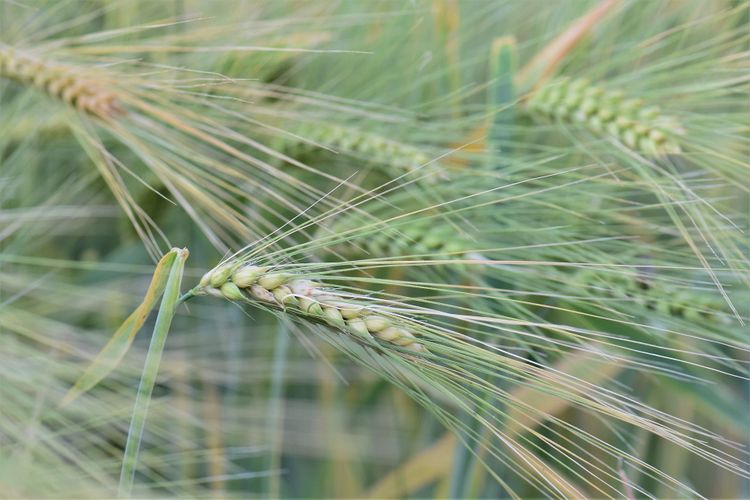 Insight
InsightLow US Hard Red Winter Wheat Production Likely, Despite Acreage Boost
 Insight
InsightChina’s Grain Imports Reach Record With a Growing Reliance on Brazil
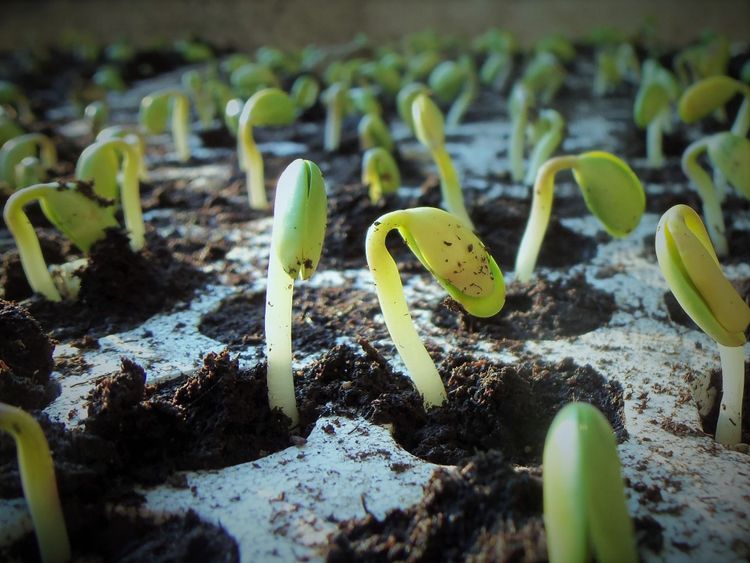 Insight
InsightUS Soybean Acreage to Shrink to a Four-Year Low, Gro Predicts
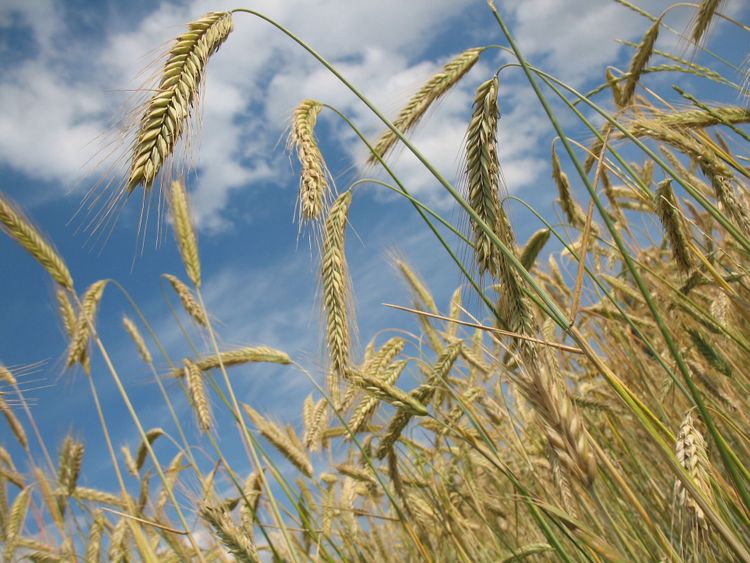 Insight
Insight

 Search
Search